A marketing KPI is an indicator used to analyze the performance of an action aimed at increasing lead generation to enable a company to reach new customers. The acronym KPI comes from the English term key performance indicators are key to performance.
Specific indicators are used to measure and analyze the effectiveness of a digital marketing strategy at each stage:
- win; example: driving traffic to your site;
- commitment; example: generating interest through social networks;
- transform; example: persuade visitors with quality content;
- eclipse; example: closing the sale and starting the customer loyalty process.
To wrap up this definition of a marketing KPI, in this article we provide you with good practices as well as 40 marketing metrics KPIs examples to help you master all aspects of data analytics:
Table of Contents
Identify traffic sources to your website
Your website is your business online showcase, but also a powerful buying tool. This is also the pillar of a good digital strategy.
Identifying the sources that send visitors to your site allows you to identify the most profitable traffic source for you.
Here are the 40 main marketing metrics KPIs you should follow to know exactly your website traffic sources.
1. Direct traffic

This indicator measures the number of URL addresses of your site that are entered directly into internet browsers to access your site’s pages.
This includes:
- clicks on URLs classified in a browser’s favorites,
- clicks on URLs in documents,
- clicks on URLs attached to emails,
- Copy and paste the URL addresses into a browser.
Why is this indicator important?
It lets you know the most popular pages of your website, the ones that attract the most attention.
2. Referral traffic
These are Internet users who visit a site other than yours and click on a link to reach your site.
A referral traffic indicator lets you know the third-party sites linking to a particular page of your website.
Why is this indicator important?
It allows you to monitor:
- relevance of the site’s theme or a blog linking to your site: a site related to your industry is useful for the natural reference of your site; an irrelevant site is penalized;
- strength and priority of the site: If it is a reliable site that has been established for several years, the link to your site contributes to Google’s trust in your site;
- the popularity of your site: the more links, the more popular your site will be (if the links are of good quality).
3. Organic traffic generated by your SEO actions
Let’s simply determine all the actions involved in the optimization of your site for search engines with SEO (Search Engine Optimization) actions.
These actions aim to improve your site’s natural reference.
The main marketing KPIs to be analyzed regularly is the number of visitors you attract by keywords when internet users click on links in search engine results.
Why is this indicator important?
An SEO manager or web marketing manager monitors the position of a website’s pages on keywords: to attract the largest possible number of visitors, of course, it is always necessary to be in the top 10 of results.
4. Paid traffic from ads
With tracking URLs, you can measure the effectiveness of your paid ads such as:
- Purchase of Ads (Google) keywords,
- Same principle as Bing Ads,
- Facebook Ads,
- advertising banners displayed on third-party sites, etc.
Why is this indicator important?
You can evaluate which paid channel brings you the most traffic and which converts the most.
You can allocate your advertising budget to paid keywords that produce the best results.
5. Traffic from social networks
These are clicks on links shared on Facebook, Twitter, and LinkedIn that refer to your website.
Why is this indicator important?
For example, it lets you specify:
- the social network that brings you the most traffic,
- the most transformative social network,
- The topic or post type that brings the most traffic.
6. Traffic from email
This is the number of Internet users who clicked on a link in your email or newsletter.
Why is this indicator important?
This marketing KPI provides:
- examining the relevance of the messages sent,
- improve the targeting of email campaigns,
- Optimizing communications and email marketing.
Evaluate visitor engagement on your website

Are you implementing your content strategy by publishing articles on your blog to drive traffic?
Do you offer whitepapers to download (case studies, guides, etc.) and create forms on each landing page to get contact information (contact details, last name, first name)?
If you run an e-commerce site, do you have product pages?
Below are some examples of marketing KPIs that will allow you to evaluate the quality of your site’s content.
7. Total number of visits
This is the number of times people visit your website in a given time period.
Why is this indicator important?
You can compare this metric each month to see if you’re gaining or losing traffic.
Then you adjust your actions to increase visitor numbers and quality.
8. Number of unique visitors
This is to determine how many different people visit your website.
Why is this indicator important?
It allows you to examine the evolution of your readers’ behavior. If they are returning to your site regularly, it’s because your content is interesting and represents a certain value in the eyes of your readers.
9. Number of regular and new readers
This is to distinguish regular visitors or even regular visitors from new readers.
Why is this indicator important?
If your main customer acquisition channel is your website, you need to steadily increase the rate of new readers. A new search-engine-optimized blog post should therefore generate new listings…with other actions keeping old readers.
10. Time spent on site
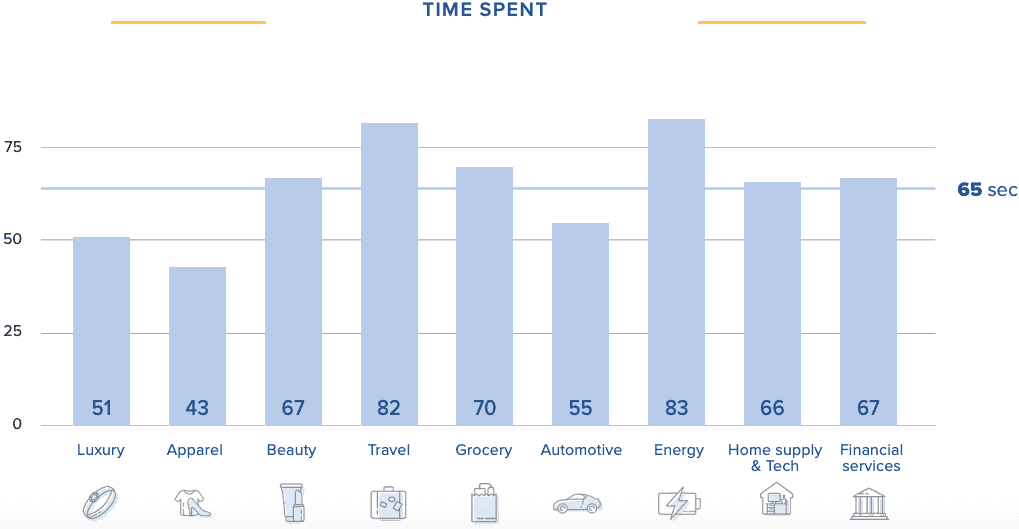
You have every interest in analyzing the time spent on your site and especially some of your pages.
Why is this indicator important?
This marketing KPIs is necessary for more ways than one because:
- reflects the quality of your content: the longer it spends on a page, the more relevant the content;
- participates in referencing your site: if the time spent on your site is long, Google will give your site credibility and improve its ranking;
- It allows you to see if your site has the ability to retain the reader by serving other content.
11. Most Viewed, Least Viewed, and “Ghost” Pages
Beyond the number of page views, it’s a question of determining which pages are the most viewed, least viewed, and never viewed.
Why are these KPIs important?
- you identify the performing pages and the pages to be improved,
- You can compare high-performing pages to identify strengths (content, SEO, etc.),
- you can fix your site’s internal links to improve the user journey,
- you can identify phantom pages that do not appear in your site tree and correct the order.
12. Bounce rate
These are Internet users who visit a page on your site and then leave without taking any further action: they do not click on any links, and they do not visit other pages. “They return”. Learn more about bounce rate from here.
Why is this percentage marketing KPI important?
- if the bounce rate is high, it is very likely that your content is not engaging enough, your calls to action (CTAs, calls to action) are not relevant;
- Your CTAs are effective if your bounce rate is low, your content is of good quality, and visitors are trapped on your site.
13. Conversion rate
This is the percentage of people who take the desired action according to the desired goal.
If your goal is to generate qualified B2B leads, only people who fill out their contact information in a form on a landing page will be counted.
This percentage is also called the conversion rate.
Why is this indicator important?
This marketing KPI is used to evaluate the effectiveness of a communication tool in relation to the set goal.
- If the conversion rate is high, your mechanics are well lubricated.
- If your rate is low, your mechanics need to be reviewed.
- However, beware of poor-quality web pages that generate lots of leads. You waste time re-qualifying relevant leads from uninteresting leads. If your leads are of poor quality, your salespeople will waste a lot of time unnecessarily.
Social media performance indicators

Here are some examples of relevant KPIs to evaluate your social media strategy.
This communication channel is a tool for improving the company’s reputation and a strong positive or negative e-reputation vector that should be watched closely.
14. Number of subscribers
Depending on the social network, for example:
- Number of fans of your Facebook page,
- Number of users subscribed to your Twitter or LinkedIn profile,
- The number of Internet users who subscribe to your LinkedIn profile or page, etc.
Why is this indicator important?
If the quality of exchanges precedes the number of fans, it is still important to recruit subscribers to work on the company’s reputation on social networks.
The more followers you have, the more likely your posts will be seen. You can compare your subscriber count to that of a competitor to give you an idea of the area of possibility…
15. Access to their publications
- A community manager also mentions reaching out to assess the potential reach of their posts on social networks.
- As with SEO, you have two types of reach: organic (free) reach and paid (advertised) reach.
Concrete examples:
- organic reach is expressed by the number of potential subscribers who can see a post in their respective news feeds,
- Paid reach is expressed by the number of potential users who can see a sponsored post in their news feed.
Why is this indicator important?
Reach is a marketing KPI that allows evaluating the potential of visibility to a specific audience.
So you estimate the maximum number of users that may be exposed to your message.
16. The number of impressions of a post
This is the number of times a post was viewed.
Impressions = views
Why is this indicator important?
As for a web page, the number of impressions of a post makes it possible to evaluate its visibility, popularity, and whether it is liked by Internet users. The number of impressions reflects the quality of the broadcast.
Note: The same Internet user may have seen the same broadcast several times.
For example, Facebook explains the difference between reach and impressions in these terms:

17. Contribution based on post type
Engagement turns into engagement with your posts:
- shares,
- “likes” (likes, favorites),
- comments,
- clicks on your links,
- Expression reactions on Facebook.
Why is this indicator important?
This indicator allows you to identify a positive or negative emotion towards your presence.
You can also monitor interactions:
- To see which types of posts are most successful,
- to understand what really interests your subscribers,
- Develop relationships with your community by responding to every comment.
It is also interesting to analyze the results provided by social networks, especially in relation to the number of clicks: you can relate these statistics to those of your site.
18. Number of influencers by brand
Influencers who subscribe to your accounts are a goldmine! They are followed by thousands, even millions of subscribers. There are too many people and potential customers for you.
Why is this indicator important?
When an influencer shares one of your posts, you multiply its visibility and the notoriety of your brand, product, or service.
Provided the influencer speaks positively about you… and becomes a messenger.
Hiring influencers is one of the successful social media strategies.
- Measure the effectiveness of your email campaigns
- Let’s talk about measuring the performance of your email marketing actions. Emailing is
- important communication, acquisition, and engagement tool.
However, in order to be effective, many criteria, rules, and laws must be followed. Here are the marketing KPIs that should be analyzed meticulously and regularly.
19. Deliverability rate
This rate refers to the number of emails that arrive in recipients’ inboxes, not spam folders.
Why is this indicator important?
- You should monitor this indicator very closely every time you post because your reputation as a sender is constantly in jeopardy;
- internet service providers have placed filters to prevent spam from reaching their inboxes;
- Furthermore, GDPR (General Data Protection Regulation) prohibits you from sending unsolicited commercial emails (especially in B2C) from 25 May 2018.
- Among the issues to be resolved, deliverability should be one of your priorities. You should maintain a high email deliverability rate and reduce the number of bounces.
20. Open rate

This rate reflects the number of emails opened by recipients.
Why is this indicator important?
- a poorly targeted marketing email will result in a very low open rate,
- an email subject uninteresting to your destination, ditto,
- You should segment your contact lists, tailor your messages to your goals, and perform A/B testing to optimize your open rate.
21. Click-through rate
These are open emails that contain at least one link. Click-through rate refers to the number of clicks on these (these) links as a percentage.
Why is this indicator important?
No buyers clicked? Your content isn’t engaging enough or your call-to-action isn’t engaging.
80% of buyers clicked? Don’t change anything, you have the secrets to email marketing success, congratulations!
22. The rate at which an email is placed in a folder
Like a favorite URL in a web browser, the recipient of your e-mail can place your message in a specific folder.
Why is this indicator important?
- this data is interesting: a message filed in a folder means that the recipient cares about your e-mail;
- so you can identify the most interesting email campaigns or newsletters;
- also, a lead that categorizes one of your emails in a folder means that the lead has matured in the funnel: watch closely!
23. Transfer rate
This rate indicates how many times your e-mail is forwarded.
Why is this indicator important?
If the transfer rate is high, it means that your email is engaging and strong enough to spread word-of-mouth!
if not, ask yourself why your recipients are sharing your messages.
24. Removal rate
This rate refers to the number of recipients who deleted your message without opening it. A blow to your marketing campaign.
Why is this indicator important?
If your deletion rate is high or rising steadily, you can be sure that you are forwarding irrelevant messages to your contacts.
Maybe you text too often? Check out your mailing list! Rethink your content! Submit new offers!
25. Churn
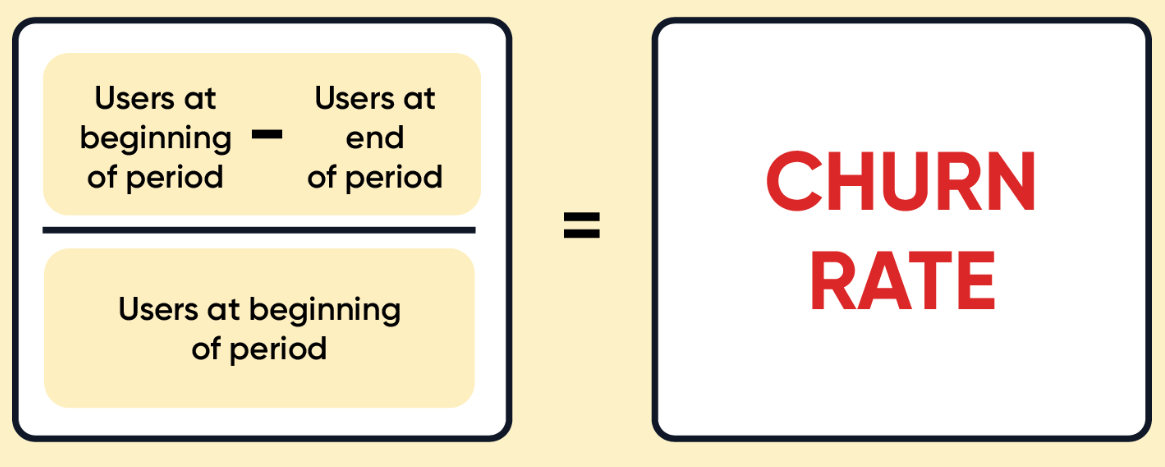
This rate refers to the rate of people leaving your list. These people no longer want to receive your emails.
Why is this indicator important?
Do not panic: at the party, it is quite possible that the contacts were not between the interested potential buyers, quite simply. In this case, this is a positive sign, as you are improving the quality of your list and therefore the deliverability of emails sent to this segmented base.
In case of mass unsubscribing, it is urgent to question the segmentation of your contact list, the form and content of your messages, and anything that might encourage your visitor to subscribe to your newsletter.
In the infographic below, SEMrush shows the content metrics that pretty much summarize the indicators we just detailed:
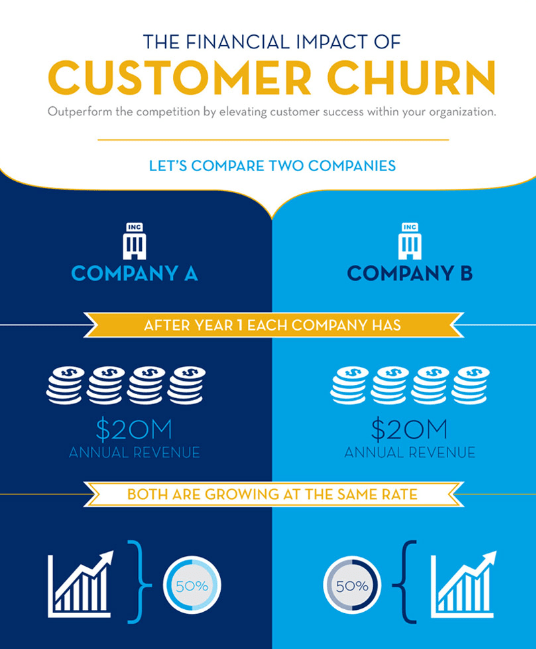
Determine the profitability of an advertising campaign
Now let’s talk about KPIs that allow you to measure the effectiveness of your online advertising campaigns, bearing in mind that they must provide a certain return on investment…
26. CPC or cost per click
For example, you buy a paid ad, which is a sponsored link based on a keyword, on Google or Facebook. Every time someone clicks on the link, you pay.
Why is this indicator important?
Calculating CPC lets you know:
- Which keyword generates the most clicks,
- Which keyword generates the most conversions on your site,
- Which is the most profitable keyword?
The goal is to generate as many qualified links as possible while spending as little money as possible. Depending on your goals and ambitions, it’s possible to position yourself towards buying less competitive keywords or to spend more on your advertising investments.
27. CPM or cost per thousand
In a display campaign, you pay to have your ad appear on third-party sites. You spend a budget for a thousand impressions of your ad.
Why is this indicator important?
Based on the purpose of your ad, calculating CPM allows you to determine the investment needed to achieve that goal.
Example: If your goal is to generate 200 leads by providing a whitepaper to download, CPM lets you examine how many times you need to invest per thousand screens to capture 200 leads.
28. CPL or cost per lead

Divide the number of leads you generate by the amount of ad spend: you get the cost it takes to get a lead.
Why is this indicator important?
This marketing KPI is required to determine the return on investment over a given period.
This generality is not always verifiable if the ideal goal is to always spend less to get more leads.
Indeed, depending on the quality of leads required, actions and results achieved, and even the amount of potential purchases by a lead, it may be appropriate to increase the number of your advertising investments, especially if your site’s content is not yet generating. leads to…
29. Revenue earned per conversion
By revenue, we mean to profit from a conversion.
To calculate revenue from a conversion:
- Multiply the value of conversions by the gross profit in %,
- Divide the resulting amount by the total number of conversions.
- Why is this indicator important?
This marketing KPI allows you to evaluate the ROI (return on investment) of your advertising campaigns in terms of profits generated. The more revenue you generate, the better your campaigns will perform.
Inbound marketing and key indicators
Here we show you some complementary B2B marketing KPIs, specific to inbound marketing and full of lessons.
In B2B, the potential customer goes through several stages of the purchase. The sales funnel is longer than in B2C.
Thanks to the methods of inbound marketing, the contact is guided and goes through different phases during which information is fed, in order to mature up to the act of purchase.
30. The number of qualified marketing contacts
A qualified marketing lead is a contact who shows interest. This contact is identified in the conversion funnel: it corresponds to the profile of the target customer.
Why is this indicator important?
According to a precise scoring (a note), the degree of interest of the contact must be detected in order to send him appropriate messages, which will guide him step by step, throughout the sales funnel. This is called lead nurturing.
31. The number of qualified sales leads
A qualified sales lead is a ready-to-buy contact. This is a hot lead: it has come to the end of the sales funnel.
Why is this indicator important?
Again, a precise score makes it possible to detect this type of contact. Based on behavioral criteria that you have determined upstream (request for a demonstration, etc.), you must send these hot leads to your sales force to prepare and conclude the sales phase.
32. The value of the opportunities generated by marketing
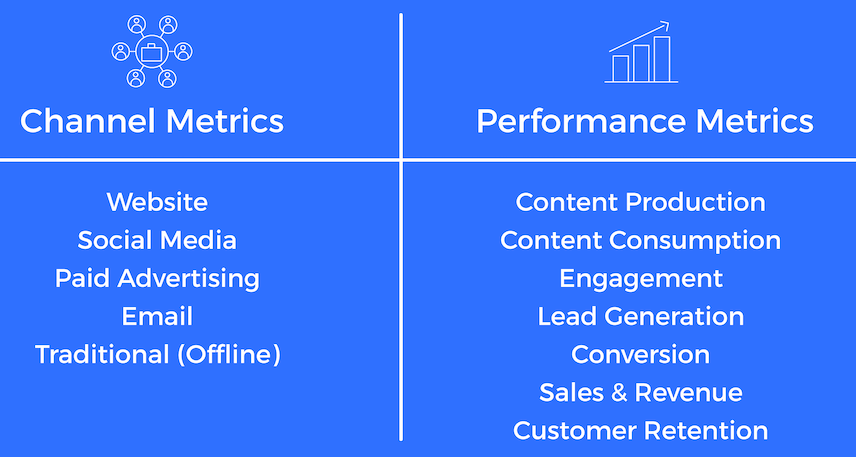
The actions of the marketing department generate qualified revenue opportunities at every stage of the sales funnel.
It involves determining all the commercial potential to conclude that marketing contributes to the commercial service, quantifying it by an amount.
Why is this indicator important?
the marketing manager has a marketing KPI that reveals a lot of the validity and importance of his actions;
with these data it demonstrates the ability of marketing to generate opportunities;
in general, the measurement of this indicator also makes it possible to better align the sales office and the marketing office with the company’s development objectives;
Sales reps need to enter data into their CRM regularly so that marketers can tap into customer insights.
33. Sales reaction time
This is the time between a prospect’s request and the seller’s response.
Why is this indicator important?
Beat the iron until it is hot. A customer who shows strong interest and whose business potential is high should not encounter any “lag time” when requesting a quote!
The risk of making this type of contact wait: is for him to go and see the competition.
It is vital that you regularly evaluate this indicator so that salespeople are as responsive as possible … and do not waste the opportunities generated by your marketing efforts.
Suggestions: use marketing automation methods, particularly suitable for B2B marketing, by scheduling the sending of automated messages following registration on your site, for example. This gives you a better customer experience.
34. The conversion rate of prospects into customers
To get this rate, for example, divide the number of leads by the number of contracts concluded in a month.
Why is this indicator important?
These marketing KPI metrics tell you how many leads you need to get a signed contract. Based on this data, your goal will be to readjust your efforts to generate more leads that turn into customers.
Other marketing KPIs to know
Some indicators will help you get the distance necessary to compare the investments made in all your actions with the results achieved.
Here are the main marketing KPIs to apply.
35. Number of marketing leaders by acquisition channel

This is the number of people corresponding to the targeted profiles created by a particular channel: email, website, or other.
Why is this indicator important?
this KPI lets you see which channels are performing the best in terms of the acquisition,
You can also see that other channels are more effective in terms of sales,
so you can rebalance the distribution of your budget in the channels that offer you the most opportunity.
36. Number of leads generated per bid
This is just the number of people interested in an offer.
Why is this indicator important?
identify the most requested offers and the least lead-generating offers,
You can focus your communication efforts on the most effective commercial offers because they are more attractive.
37. CAC or customer acquisition cost
It is a matter of evaluating the effective spending to convert a prospect into a customer.
Why is this indicator important?
Acquisition marketing strategies always aim to make the most of the actions taken to generate leads.
Based on this indicator, you can evaluate the value of a lead by comparing the required investments with the effectiveness of the actions taken.
38. Rate of attrition or loss
The churn rate is a rate that represents the rate of lost customers or subscribers.
You can measure it monthly, quarterly, or annually, depending on your business model and growth goals.
Why is this indicator important?
- This marketing KPI is particularly important for subscription service activities such as SaaS software.
- Also, the possibility of conquering more costs than a repeat customer. Be a pioneer: Build a relationship program to retain your existing customers.
39. A customer’s repeat purchase rate
This includes determining the number of customers who made at least two purchases during the year.
Why is this indicator important?
A repeat customer is a satisfied customer. If most of your customers make more than one purchase per year, that’s an excellent indicator of customer satisfaction.
40. Customer lifetime value

- Customer Lifetime Value (CLV) refers to the total profit earned by the company thanks to a customer.
- This value is measured during the period when the person is a customer of the company.
- This metric should be segmented according to your customer profiles.
Why is this indicator important?
- By comparing your segments, you determine which customer profile generates the most revenue,
- You can focus your investments on the stocks with the highest return,
- By comparing the cost of customer acquisition and CLV, you get an indicator that allows you to evaluate the effectiveness of your actions in relation to the results achieved.
Tools to monitor your marketing KPIs
Tired of tracking your marketing KPIs with Excel? You’re right!
For your indicators to be readable and consistent, you need to have marketing indicators integrated into a personalized dashboard with your goals.
A study by Adetem (National Association of Marketing Professionals) in 2015 already revealed the importance of data analysis tools:
note* Only 60% of marketing managers had marketing measurement indicators to assess the impact of marketing on the economic performance of their company;
81% had a dashboard.
Do you spontaneously think of the data provided by Google Analytics? You are right.
However, some cloud technologies are essential: they allow you to better manage your marketing actions. Overview of the different tools to consider.
Hope!!! You find these 40 marketing metrics and KPIs useful. For more such interesting content please make sure to subscribe, share and leave comments. Thank You.

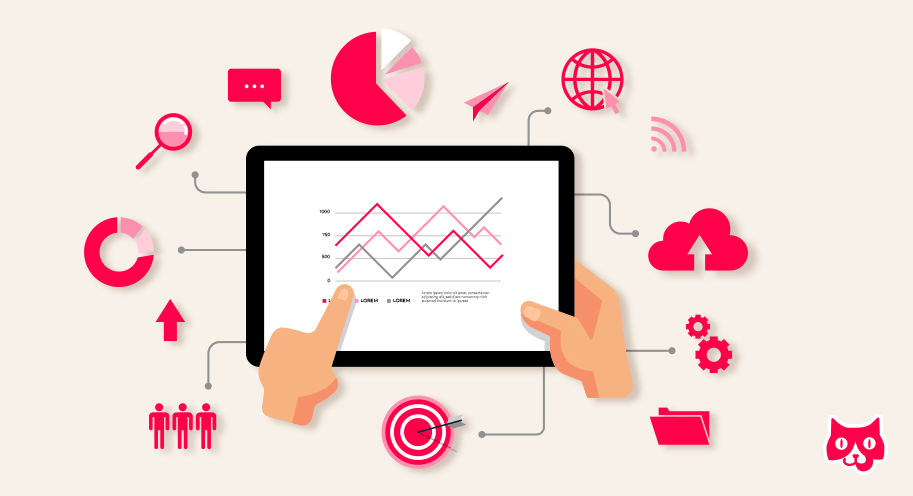
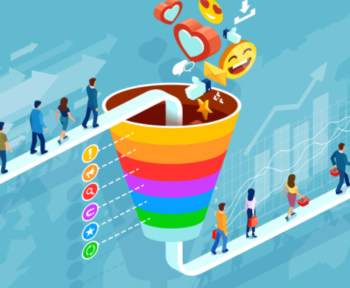


1 Comment